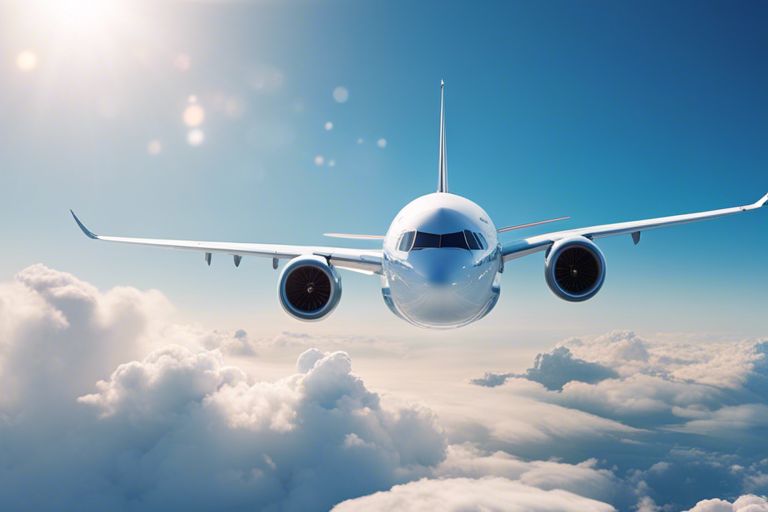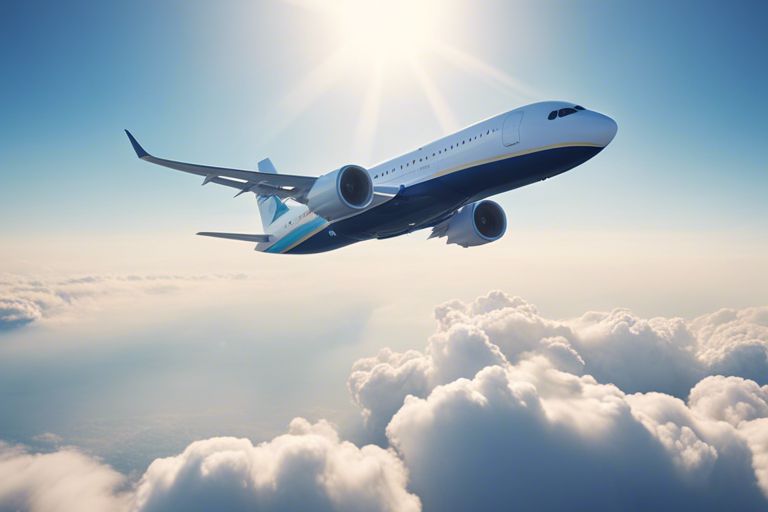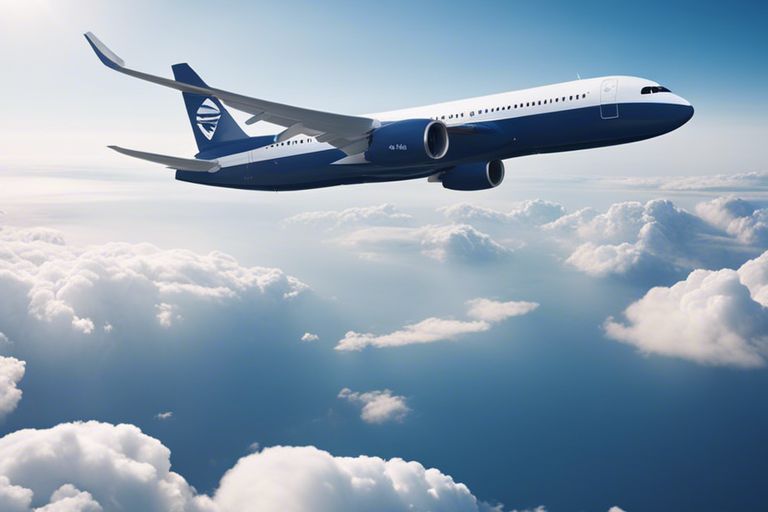Table of Contents
Aviation has made significant technological advancements over the years, making air travel one of the safest modes of transportation. When you consider the numerous safety measures implemented in the design, maintenance, and operation of airplanes, it’s clear that this form of travel is incredibly secure. From strict regulations and rigorous maintenance checks to advanced navigation and communication systems, the industry prioritizes your safety above all else. However, it’s important to acknowledge that, like any mode of transportation, there are inherent risks associated with air travel. Despite this, the positive aspects undoubtedly outweigh the dangers, and millions of individuals trust airplanes to safely transport them to their destinations every day.
Key Takeaways:
- Strict Safety Regulations: Airplanes are subject to rigorous safety regulations set by aviation authorities, ensuring the highest safety standards are met.
- Regular Maintenance Checks: Airlines perform routine maintenance and inspection of their aircraft to ensure they are in optimal working condition.
- Experienced Pilots: Commercial airline pilots undergo extensive training and have thousands of flying hours, making them highly skilled in handling the aircraft.
- Advanced Technology: Modern airplanes are equipped with advanced navigation systems and safety features to minimize the risk of accidents.
- Emergency Preparedness: Airlines have comprehensive emergency protocols in place, including trained crew members and access to emergency landing sites in case of unforeseen circumstances.
The Engineering of Airplanes
Some may wonder how safe airplanes are, especially when they hear about a rare but tragic plane crash. According to How Safe is Flying?, the engineering of airplanes plays a crucial role in ensuring safety during flights. Let’s take a closer look at the various aspects of airplane engineering that contribute to their overall safety.
Design and Structural Integrity
When you board an airplane, you are trusting not only the skill of the pilots but also the integrity of the aircraft itself. The design and structural integrity of airplanes are meticulously engineered to withstand the forces and stresses of flight. From the wings to the fuselage, every component is designed and tested to ensure maximum durability and safety during various flight conditions. Additionally, advancements in materials and manufacturing technology have significantly enhanced the strength and reliability of modern aircraft, making them even safer for your journey.
Redundancy and Fail-Safe Systems
Another critical aspect of airplane engineering that ensures safety is the incorporation of redundant systems and fail-safes. In aviation, the concept of redundancy is paramount, with crucial systems such as hydraulics, electricals, and navigation having multiple backups and fail-safe mechanisms. This means that even if a primary system were to fail, there are secondary and tertiary systems in place to ensure the continued safe operation of the aircraft. These redundancies are meticulously designed to provide extra layers of protection and peace of mind for you when you’re in the air.

Safety Regulations and Oversight
Even though the idea of flying at high altitudes can be intimidating, commercial air travel is actually one of the safest modes of transportation. This is largely due to the rigorous safety regulations and oversight that govern the aviation industry. These regulations and oversight are put in place to ensure that every aspect of air travel, from aircraft design to pilot training, meets the highest safety standards.
International Aviation Safety Standards
International aviation safety standards are established and regulated by organizations such as the International Civil Aviation Organization (ICAO) and the Federal Aviation Administration (FAA). These standards cover everything from aircraft maintenance and operation to airport security and air traffic control. By adhering to these standards, airlines and aviation authorities around the world work together to ensure that air travel is as safe as possible.
The Role of Aviation Authorities
Aviation authorities, such as the FAA in the United States and the European Aviation Safety Agency (EASA) in Europe, play a crucial role in overseeing and enforcing safety regulations. These authorities conduct regular inspections and audits of airlines, aircraft, and other aviation facilities to ensure that they are in compliance with safety standards. They also have the authority to issue fines and sanctions for non-compliance, and to ground aircraft or suspend operations if they deem it necessary for safety reasons.
Accident Statistics and Analysis
Keep in mind that while the thought of an airplane accident can be unsettling, it is important to consider the actual statistics and data before making assumptions about air travel safety. Accidents are rare, and the aviation industry continually works to improve safety measures and technology to prevent accidents from occurring.
Historical Data on Airplane Accidents
Over the years, the aviation industry has made significant advancements in safety, resulting in a steady decrease in the number of airplane accidents. According to historical data, the probability of being involved in a plane crash has decreased significantly over the past few decades. Thanks to improved technology, training, and safety regulations, the chances of experiencing an accident while flying are extremely low.
Comparing Air Travel to Other Modes of Transportation
When it comes to safety, you may be surprised to learn that air travel is actually one of the safest modes of transportation. In comparison to other forms of travel such as car, train, or boat, flying on a commercial airplane is statistically much safer. According to a comparison of transportation modes, the rate of fatalities per billion passenger miles for air travel is significantly lower than that of other methods of transportation.
It is important to note that the aviation industry places a strong emphasis on safety and continues to prioritize measures to ensure passenger well-being during air travel. While accidents do occur, the overall safety record of commercial airlines remains impressive.
Safety Protocols and Procedures
Despite the initial anxiety you may feel about flying, it’s important to remember that airplanes are designed with multiple safety protocols and procedures to ensure a safe journey for all passengers. From pre-flight safety checks to in-flight emergency protocols, airlines and their crew are committed to keeping you safe at all times. Let’s take a closer look at some of these safety measures.
Pre-Flight Safety Checks and Maintenance
Before every flight, aircraft undergo thorough pre-flight safety checks and maintenance to ensure that all systems are functioning properly. This includes checking the engines, fuel systems, avionics, and other critical components of the aircraft. In addition, regular maintenance schedules are followed to identify and address any potential issues before they become a threat to your safety. These measures are in place to ensure that the aircraft is in top condition before you board.
In-Flight Safety Measures and Emergency Protocols
Once the aircraft is in the air, the crew is trained to handle a wide range of in-flight safety measures and emergency protocols. Your safety is their top priority, and they are equipped to handle any situation that may arise during the flight. From turbulence to medical emergencies, the crew is prepared to respond quickly and effectively to keep you safe. Additionally, modern aircraft are equipped with state-of-the-art safety features, including redundant systems and advanced avionics, to ensure a safe journey from takeoff to landing.
By following these rigorous safety protocols and procedures, airlines are able to maintain an outstanding safety record, making air travel one of the safest modes of transportation available. While the thought of flying may still make you nervous, knowing that these measures are in place should provide you with a sense of security as you take to the skies. Remember, your safety is always the top priority when you’re on board an aircraft.

How Safe Is an Airplane?
Conclusively, flying on an airplane is one of the safest modes of transportation. With strict regulations, rigorous training for pilots and crew, and constant advancements in technology, the aviation industry has made significant strides in ensuring the safety of passengers. Airlines and aircraft manufacturers are constantly working to improve safety and mitigate risks. Additionally, the industry is heavily regulated and monitored by governing bodies to maintain the highest safety standards. While no mode of transportation is completely risk-free, the safety measures in place on an airplane make it a reliable and secure way to travel.
FAQ
Q: How safe are airplanes?
A: Airplanes are one of the safest modes of transportation. The aviation industry is heavily regulated, and aircraft undergo rigorous maintenance and safety checks. Additionally, pilots and crew members must adhere to strict training and safety protocols to ensure the safety of passengers.
Q: What measures are in place to ensure airplane safety?
A: Various measures are in place to ensure the safety of airplanes. These include regular maintenance and inspections of aircraft, stringent training and licensing requirements for pilots and crew members, adherence to air traffic control regulations, and the implementation of advanced safety technologies on modern aircraft.
Q: What are the statistics on airplane safety?
A: According to statistical data, flying remains one of the safest forms of travel. The likelihood of being involved in a plane crash is extremely low, and the vast majority of flights arrive at their destinations safely. In fact, the aviation industry continuously works to improve safety measures and has seen a steady decline in accident rates over the years.

